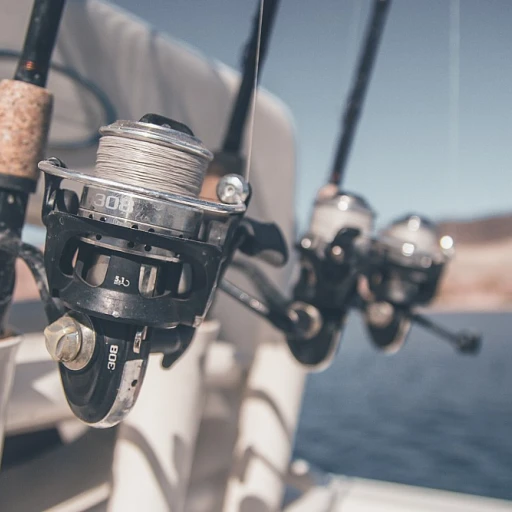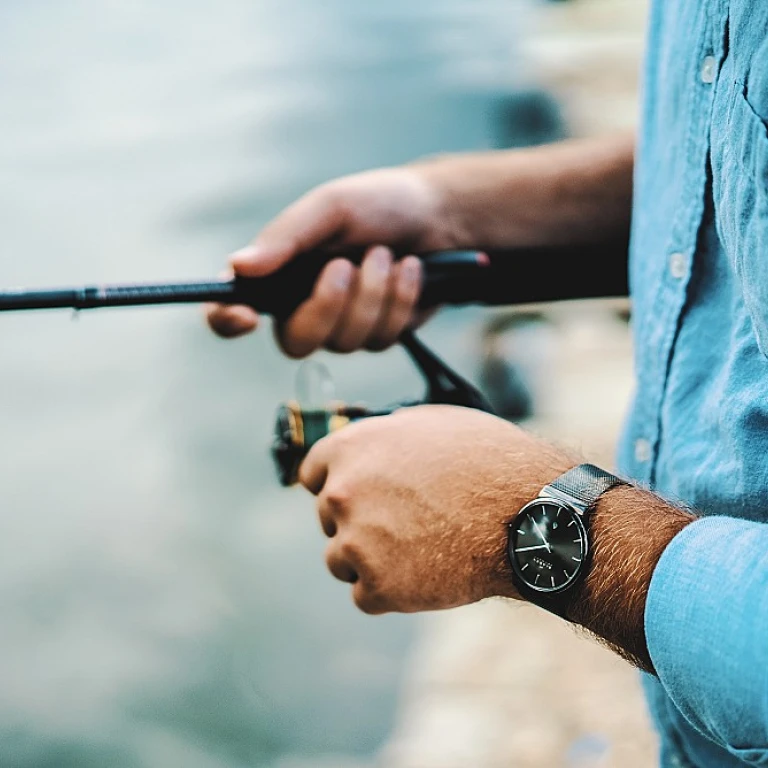The Mystique of River Gars
Diving into the Enigmatic Allure of River Gars
The river gar, a creature with prehistoric roots, offers a beguiling mystery for anglers and aquatic enthusiasts alike. Known for its elongated, armored body and formidable snout brimming with razor-sharp teeth, the river gar stands as one of nature's most intriguing designs. Its presence in North America's freshwater habitats stirs both fascination and a hint of trepidation, inviting those who seek encounters with ancient species.
What makes the river gar so captivating is not merely its appearance but its remarkable resilience. These fish have thrived through epochs, adapting to varying aquatic environments while maintaining their primitive charm. Observing a gar in its natural habitat is akin to glimpsing into a prehistoric world, where these "living fossils" have roamed for millions of years.
For enthusiasts and professionals in the fishing community, river gars are more than just targets for sport. They are symbols of ecological endurance, providing a vital component in the balance of aquatic ecosystems. Their predatory nature helps regulate fish populations, supporting biodiversity and ecosystem health. The mystique surrounding these fish often draws anglers to riverbank structures, which many believe hold the key to reeling in a sizable catch. For those keen to explore such spots, understanding the role of
riverbank structures can be instrumental in achieving a successful fishing excursion.
In forthcoming discussions, we will delve deeper into the gar family, revealing even more about the diversity and habits of these incredible creatures. With each river gar story, we unlock a new chapter in the ever-evolving narrative of fishing and nature itself.
Meet the Gar Family
Unraveling the Gar Clan
River gars are a captivating family of fish that spark curiosity and intrigue among fishing enthusiasts. These unique creatures boast an ancient lineage that dates back millions of years. The gar family is known for its elongated bodies, needle-like teeth, and distinctive scales that give them a prehistoric appearance.
The members of this family can be found across the Americas, from North to Central America, thriving in various freshwater habitats. Although they belong to the same family, each species of gar has its individual traits and characteristics.
Among the prominent members of the gar family, the alligator gar stands out as the largest and most formidable of them all. With its massive size and powerful jaw, it is a captivating species for fishermen looking for a thrilling catch. Meanwhile, the longnose gar is known for its extended snout and sleek physique, making it a favorite among anglers seeking a challenge.
Understanding the differences and similarities within the gar family is key for anyone interested in fishing these fascinating creatures. Learning more about this fish family can lead to a more enriching fishing experience.
For those eager to delve deeper into the world of river gars, you might find this guide on how to outsmart giant fish at your local bank particularly insightful. Whether you're a seasoned angler or a newcomer, the gar family offers a treasure trove of excitement and mystery waiting to be explored.
Fishing for Gars: A Unique Experience
Fishing for the Legendary Gar
The art of fishing for gars offers a unique and exhilarating experience, differing vastly from catching more common species. Gars are often considered the ultimate challenge for many anglers due to their elusive nature and formidable strength. Notorious for their impressive size, razor-sharp teeth, and prehistoric appearance, they evoke a sense of adventure akin to hunting for ancient creatures.
One might wonder what makes gar fishing such a singular pursuit. The answer lies in the excitement of outsmarting these cunning aquatic beings. They require patience, skill, and knowledge of their behavior patterns, making every successful catch deeply rewarding. Anglers often find themselves captivated by the thrill of targeting this primal fish, akin to the allure of other challenging catches; to learn more about thrilling fishing experiences, check out
the thrill of catching bull redfish.
The best technique for landing a gar often involves using specialized gear. Heavy-duty rods and lines, along with a robust leader to withstand their powerful bites, are imperative. Additionally, anglers need to be strategic with their choice of bait, typically favoring filets of shad, mullet, or other oily fish. The commitment to mastering these tactics sets gar fishing apart from more conventional types of angling.
Fishing for gars also takes one to breathtaking locales, such as sprawling rivers and lush backwaters, where these ancient predators dwell, making the journey as thrilling as the catch. For those fascinated by the world of river fishing, there's much to explore and learn about burgeoning fishing destinations and the vital role they play in conserving the gar population.
Conservation Efforts and Challenges
Preserving the Primal Patrimony
The river gar, with its prehistoric lineage and unique characteristics, faces a pivotal moment in its prolonged existence. Conservation efforts are becoming crucial as the pressures from both natural and human-induced factors mount. This combination of challenges calls for a comprehensive understanding and strategic approach to ensure the gar’s survival.
Human activities such as habitat destruction, pollution, and overfishing have considerably affected the natural ecosystems that sustain the gar family. The construction of dams and modification of river courses can lead to significant habitat loss, obstructing the natural migration patterns and reproduction cycles that are vital for their population maintenance.
Conservationists and environmental organizations are joining forces, focusing their efforts on protecting and restoring the habitats essential for these aquatic titans. Reforestation of riparian zones, reduction of water pollution, and sustainable fishing practices are being advocated to mitigate the negative impacts of human development.
Moreover, raising public awareness about the ecological importance of river gars is critical. Educational initiatives highlight the role of gars in maintaining the biodiversity and health of their aquatic ecosystems. Conservation laws, such as catch-and-release regulations and fishing quotas, are being implemented in various regions to ensure that gar populations are not only sustained but thrive.
However, challenges persist. Environmental changes, such as climate change, introduce unpredictable variables that could further jeopardize their habitats, making conservation efforts more challenging but ever more necessary. By embracing a collaborative spirit among communities, authorities, and nature enthusiasts, we can aspire to a future where gars continue to glide through our rivers, embodying the ancient marvels of evolution.
Gars in Popular Fishing Destinations
Prime Locations to Encounter River Gars
When it comes to seeking out river gars, there's no shortage of picturesque locales that cater to both the seasoned angler and those new to the pursuit. These rugged, toothy predators can be found lurking in some of the most awe-inspiring freshwater environments, making your fishing trip an adventure not just in angling, but in exploring breathtaking natural settings.
From the mighty Mississippi River to the serene waters of the Suwannee River, gars have made these rivers their domain. These locales not only offer a glimpse into the diverse habitats that gars call home but also provide an opportunity to immerse yourself in the wider ecosystem. Beyond just the thrill of the catch, anglers often find themselves captivated by the wildlife and natural beauty that accompanies a day on a gar-rich river.
In places like Texas and Florida, gars are a common sight. The state's vast waterways present numerous opportunities for hooking into one of these prehistoric fish. Florida's central and northern rivers, such as the St. Johns River, are known hotspots where gar fishing enthusiasts flock seasonally.
The engaging experience of fishing for river gars is enriched further by the support of local conservation efforts, which aim to balance their populations and ensure sustainable fishing practices. By venturing into these prime gar spots, anglers contribute to the broader conservation goals and help preserve these incredible species for future generations.
These popular fishing destinations not only cater to the allure of catching a river gar but also invite a deeper appreciation for the environments they inhabit. While the competition among anglers can be fierce, the camaraderie and shared love for this unique sport create a community bound by a mutual respect for nature and the majestic river gars within it.
The Future of Gar Fishing
Envisioning the Evolution of Gar Fishing
As we look to the future of gar fishing, it's essential to examine the environmental, technological, and social aspects that will shape this unique pastime. In previous sections, we've delved into the enigmatic nature of river gars, explored the diverse gar family, and shared firsthand accounts of the thrilling experience of fishing for these ancient creatures. Moreover, we've discussed the conservation efforts in place to protect gars and highlighted their presence in popular fishing destinations. Now, it's time to explore how gar fishing might evolve.
First and foremost, environmental factors will significantly influence the future of gar fishing. As climate change alters water temperatures and river ecosystems, gars and their habitats may experience shifts that can affect their populations. This underscores the importance of ongoing conservation efforts, ensuring that both the gar species and their unique environments are preserved for future anglers.
Technological advancements will also play a critical role. Innovative fishing gear, such as eco-friendly materials and advanced fish-finding sonar systems, enhances the fishing experience while minimizing environmental impact. Moreover, the growing trend of digital platforms allows anglers to share experiences and knowledge, fostering a global community centered around responsible fishing practices.
Social awareness and interest in sustainable fishing practices continue to rise, influencing the way enthusiasts engage with gar fishing. Educational programs and community initiatives have begun to emphasize the ecological significance of gars, encouraging responsible fishing and catch-and-release techniques among both amateur and experienced anglers.
Finally, as the world becomes increasingly urbanized, the popularity of fishing-related tourism is expected to grow. With river gars found across diverse fishing locales, there are ample opportunities for enthusiasts to venture into new territories, perhaps even participating in sustainable fishing tours and conservational programs.
As these aspects converge, the future of gar fishing is poised to adapt to the changing times while preserving the allure that has fascinated generations of anglers. This evolution promises to provide exciting new challenges and experiences for those drawn to the mystique of river gars.

